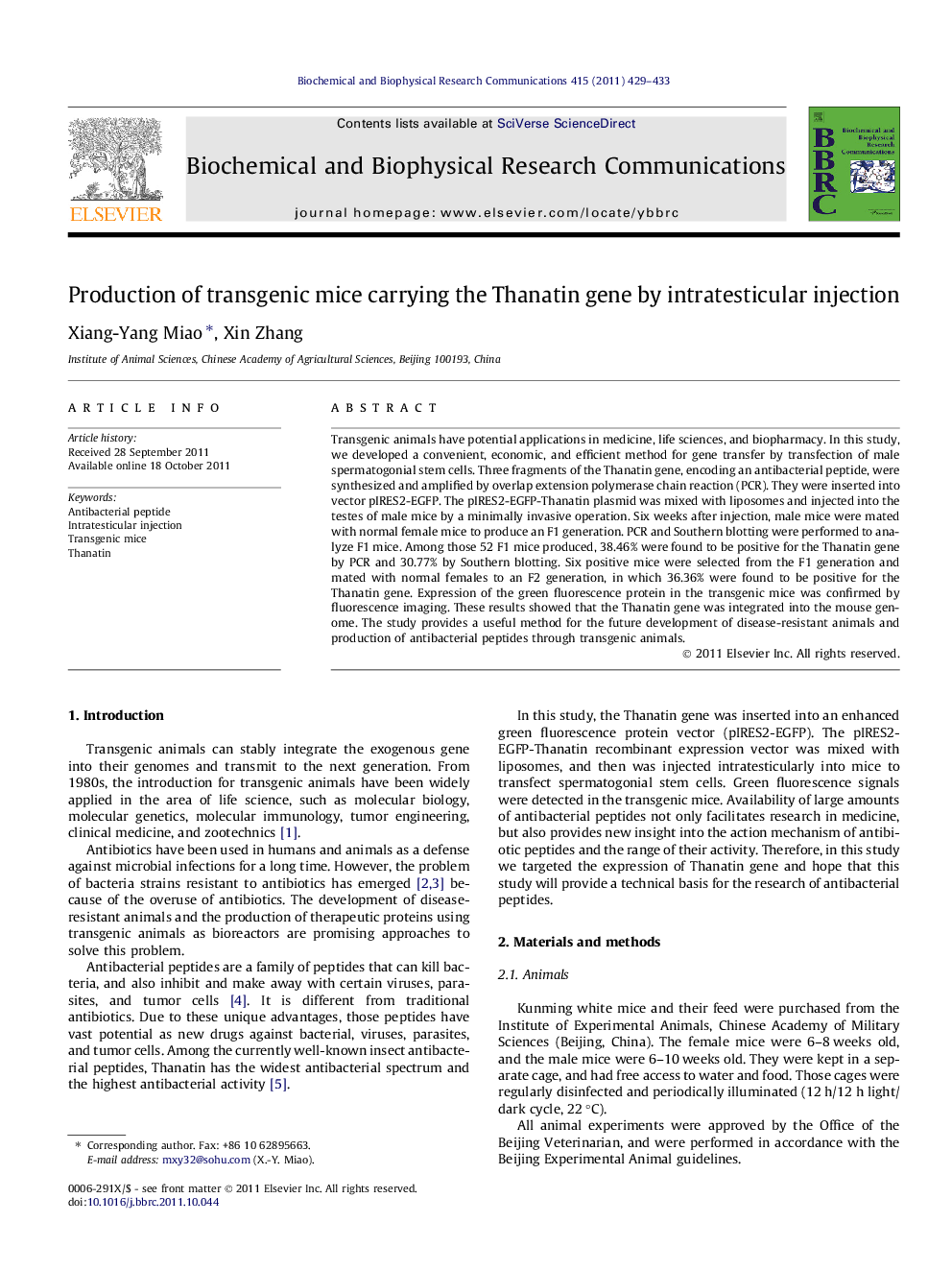| Article ID | Journal | Published Year | Pages | File Type |
|---|---|---|---|---|
| 1929935 | Biochemical and Biophysical Research Communications | 2011 | 5 Pages |
Transgenic animals have potential applications in medicine, life sciences, and biopharmacy. In this study, we developed a convenient, economic, and efficient method for gene transfer by transfection of male spermatogonial stem cells. Three fragments of the Thanatin gene, encoding an antibacterial peptide, were synthesized and amplified by overlap extension polymerase chain reaction (PCR). They were inserted into vector pIRES2-EGFP. The pIRES2-EGFP-Thanatin plasmid was mixed with liposomes and injected into the testes of male mice by a minimally invasive operation. Six weeks after injection, male mice were mated with normal female mice to produce an F1 generation. PCR and Southern blotting were performed to analyze F1 mice. Among those 52 F1 mice produced, 38.46% were found to be positive for the Thanatin gene by PCR and 30.77% by Southern blotting. Six positive mice were selected from the F1 generation and mated with normal females to an F2 generation, in which 36.36% were found to be positive for the Thanatin gene. Expression of the green fluorescence protein in the transgenic mice was confirmed by fluorescence imaging. These results showed that the Thanatin gene was integrated into the mouse genome. The study provides a useful method for the future development of disease-resistant animals and production of antibacterial peptides through transgenic animals.
► Thanatin-transgenic mice were generated by transfection of spermatogonial stem cells. ► 36.36% of F2 generation had Thanatin gene. ► Expression of the green fluorescence protein in transgenic mice was confirmed.
